Minding the Gap: Behavior & Performance Achievement

Starting the school year with a bang is everyone’s top priority. However, all those who are in the business of educating students know a notable pattern emerges within the first two-three weeks. Two sets of learners show up: those who are “completely independent” and those who are “actively inefficient.” H. L. Swanson wrote an article about Strategy Instruction in which he described these actively inefficient learners as those whose biggest weakness was in the domain of juggling the multiple mental tasks of evaluating, organizing, and coordinating academic aspects of reading and writing concurrently.
The first type of learner is the one with good Executive Function (EF) allowing her to focus on the task at hand, control impulses, stay organized, and evaluate choices. This learner possesses all the essential abilities to adapt to new performance demands as well as learning challenges. It goes without saying, the student with good Executive Function ability is appreciated, supported, or even admired for the skills of independence, self-sufficiency, impulse control, and collaboration.
In a learning context, the “completely independent” learner is valued and is eventually supported while she makes free-choices, exercises autonomy and is trusted to be left unsupervised. Such social feedback boosts the self-perception of this learner regarding personal strengths. You can imagine what self-affirmations must go through this student’s head. They may be something like:
- “I am good at this!”
- “I am a good listener”
- “I am a good learner.”
- “I can ask questions when I need help.”
- “I understand how to do this, but if I don’t, it’s not a big deal…”
Overall, this student obviously receives verbal praise or unspoken encouragement furthering her love for learning.
On the other hand, the “actively inefficient” learner struggles with his Executive Functioning skills. This student may be blurting out answers, zoning in and out of the given activity, getting bored, or is not staying fully engaged in class activities. The student’s work may be riddled with errors, false starts, or may lack depth/reflection. Obviously, this student is not adapting to learning demands well. This student may not be able to regulate learning and produce high quality work in spite of supervision or constant hand-holding. Finally, it is not only hard to rope this child into learning but at times, maybe even frustrating. The self-affirmations for the “actively inefficient” learner may sound something like this:
- “I am not good at this!”
- “My teacher thinks I am not a good a listener.”
- “My work shows that I am not a good learner.”
- “Oops, I missed it. How can I ask a question? I will look like an idiot.”
- “I don’t understand how to do this. But I already asked twice, and I still don’t get it. Forget about it.”
In conclusion, it is natural to foresee that the “actively inefficient” learner is not likely to receive the greatest positive reinforcement regarding his capacity for learning and his output that results from mismanaged learning. The question remains what are we doing differently for this student?
I hope to leave you with a thought to ponder, “Are we minding the gaps in our educational system and helping our students learn how to navigate with the Executive Function skills they need to cultivate strong learning habits, become advocates for their own learning journey, and ultimately link learning to their individual purpose?”
